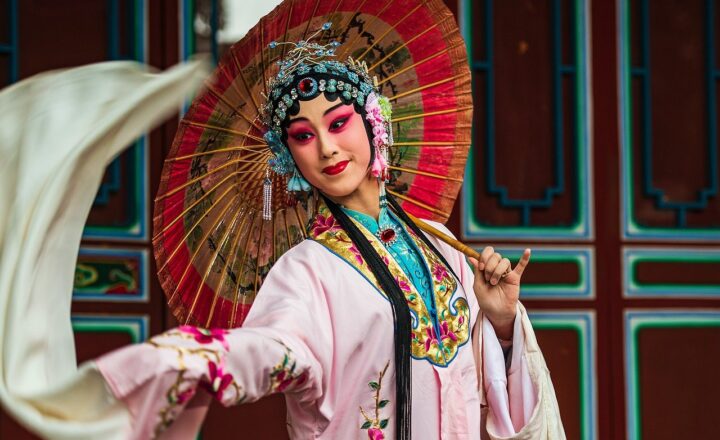The Most Unusual Food Rituals Across the World and Their Cultural Meanings
November 17, 2024

Food is not just a means of sustenance; it plays a crucial role in the lives of people around the world, often intertwined with cultural beliefs and rituals. From communal feasts to symbolic offerings, food rituals reflect values, traditions, and communal identities. This article explores some of the most unusual food rituals found across the globe, shedding light on their origins and cultural significance.
1. La Tomatina: A Celebration of Tomatoes in Spain
La Tomatina is an annual festival held in the town of Buñol, Spain, where participants engage in a massive tomato fight. Founded in 1945, this quirky celebration originated from a group of young people who decided to have fun during a local parade. What started as a spontaneous food fight has transformed into a world-famous festival, attracting thousands of visitors each year.
The tomatoes, thrown in a frenzy of laughter and joy, symbolize the abundance of harvest and community spirit. The entire event promotes camaraderie, and it ends with participants cleaning up the town together—a unique mix of fun and responsibility.
2. The Japanese Tea Ceremony: An Art of Harmony
The Japanese Tea Ceremony, known as Chanoyu, is an ancient ritual centered around the preparation and consumption of matcha (powdered green tea). It is a highly choreographed art form embodying harmony (wa), respect (kei), purity (sei), and tranquility (jaku).
During the ceremony, every movement is deliberate and meaningful—from the arrangement of the tea utensils to the way the tea is whisked. This ritual reflects profound cultural values, emphasizing mindfulness, respect for nature, and an appreciation for simplicity. Each serving of tea represents a moment of connection between the host and guests, fostering an atmosphere of peace and reflection.
3. Day of the Dead: Offerings to Honor the Departed in Mexico
The Day of the Dead (Día de los Muertos) is a vibrant Mexican festival held on November 1st and 2nd, where families gather to honor their deceased loved ones. Central to this celebration is the creation of colorful altars (ofrendas) adorned with favorite foods, drinks, and photographs of the departed. Traditional foods such as pan de muerto (a special bread) and sugar skulls are common offerings.
This ritual reflects a unique cultural perspective toward death, where it is seen not as an end but a continuation of life’s journey. The offerings serve as a means for the living to pay tribute and maintain a connection with their ancestors, blending joyous celebration with remembrance.
4. Eating with Hands in Indian Culture: A Gesture of Connection
In many parts of India, eating with hands is not just a practice but a ritual rooted in respect and connection between the eater and their food. Traditionally, the right hand is used for eating, which is believed to signify the sharing of nutrients and energies.
The act of eating with hands allows individuals to engage more intimately with their meal, fostering mindfulness and pleasure in the sensory experience. Mixing food with fingers enhances the enjoyment and is often a communal activity, reinforcing social bonds among family and friends.
5. Tasting the Earth in Ethiopia: Eating with Injera
In Ethiopian culture, meals are served on a large communal platter covered with injera, a spongy sourdough flatbread. Instead of using utensils, diners tear pieces of injera and use them to scoop up stews and vegetables, sharing the experience as a community.
This unique meal-sharing ritual reflects values of sharing, hospitality, and unity. The broken pieces of injera symbolize the Earth’s bounty and the cycle of life, encouraging diners to appreciate the interconnectedness of all meals and the importance of community in nourishment.
6. Eating the Intestines of the Cattle: Yakiniku in Japan
In Japan, Yakiniku (grilled meat) is a popular culinary tradition with different cuts of meat, including the intestines or offal. These dishes often convey messages of respect for the whole animal and sustainable eating practices. This ritual involves marinating the meat with special sauces and grilling it to perfection.
Enjoying every part of the animal tells the story of appreciation and gratitude in Japanese culture and encourages diners to relish the complexity of flavors in every bite.
7. The Ritual of the Pig Roast in Hawaiian Culture: A Celebration of Community
The Hawaiian luau is famous for its pig roast, where whole pigs are traditionally cooked in an underground oven called an imu. The ceremony is often held for significant occasions and is accompanied by music, hula dancing, and other dishes. The pig roasting ritual represents hospitality, family ties, and celebration.
This communal feast not only emphasizes the importance of sharing sustenance but also serves as a means of bringing together family and friends, showcasing the values of community and cultural heritage.
Conclusion: Food as a Cultural Bridge
These unusual food rituals reflect the rich tapestry of traditions across the world, revealing how food transcends mere physical nourishment. Each ritual is a unique expression of cultural identity, social values, and communal ties, allowing us to connect with one another and embrace the diversity of human experience. Exploring these diverse culinary practices not only satisfies our palates but enhances our understanding of the world around us. By valuing food rituals, we can foster greater appreciation for one another’s cultures and resonances that run deeper than the plates we share.
Food is indeed a universal language, and the rituals surrounding it serve as cultural bridges connecting us all.








